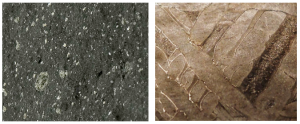Chapter 9 Earth’s Interior
Learning Objectives
After carefully reading this chapter, completing the exercises within it, and answering the questions at the end, you should be able to:
- Explain the variations in the composition and characteristics of Earth’s different layers
- Compare the characteristics and behaviour of the two types of seismic body waves
- Summarize the variations in seismic-wave velocity as a function of rock type and temperature and pressure conditions
- Explain some of the ways that seismic data can be used to understand planetary interiors
- Describe the temperature variations within Earth and their implications for internal processes such as mantle convection
- Explain the origins of Earth’s magnetic field and the timing of magnetic field reversals
- Describe the isostatic relationship between the crust and the mantle, and the implications of that relationship for geological processes on Earth
In order to understand how Earth works, and especially the mechanisms of plate tectonics (covered in Chapter 10), we need to know something about the inside of our planet — what it’s made of, and what goes on in there. We have a variety of ways of knowing, and these will be discussed in this chapter, but the one thing we can’t do is go down and look! Fortunately there are a few places where mantle rock is exposed on Earth’s surface, and we have some samples of material from the insides of other planetary bodies, in the form of meteorites that have landed on Earth (Figure 9.1). We also have a great deal of seismic information that can help us understand the nature of Earth’s interior.

Earth’s interior is broadly divided by composition and depth into crust, mantle, and core (Figure 9.2). The crust is primarily (~95%) made up of igneous rock and metamorphic rock with an overall composition between intermediate and felsic. The remaining 5% is made up of sedimentary rock, which is dominated by mudstone.
The mantle includes several layers, all with the same overall ultramafic composition. The upper mantle is typically composed of peridotite, a rock dominated by olivine and pyroxene. The lower mantle has a similar chemical composition, but because of the extreme pressures, different minerals are present, including spinels and garnets. The properties of the mantle also vary with depth, as follows:
- Lithosphere: solid
- Asthenosphere: partially liquid
- Upper and lower mantle: solid but plastic (the difference between the two is in the type of minerals)
- “D” layer (the part of the mantle within 200 km of the core): partially liquid
- The core-mantle boundary (CMB) is at a depth of 2,900 km.
The core is primarily composed of iron, with lesser amounts of nickel (about 5%) and several percent oxygen. It is extremely hot (~3500° to 5000°C). The outer core is liquid while the inner core is solid — even though it is hotter — because the pressure is so much greater at that depth.
Although the CMB is a little less than half of the way to Earth’s centre, the mantle, being on the outside, is by far the major component of Earth. The mantle makes up 82.5% of the volume, the core 16.1%, and the crust only 1.4%.
In the remainder of this chapter, we’ll look first at how we know about Earth’s interior structure, and then at the properties of the different layers and the processes that take place within them.
![Figure 9.2 Earth’s layers: crust is pink, mantle is green, core is blue [SE]](https://open.maricopa.edu/app/uploads/sites/8/2020/06/9-earth-interior-89x300-1.png)

